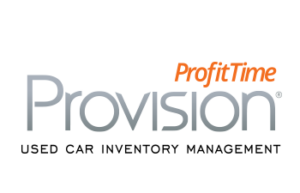ProfitTime in Practice: Discipline Drifts in Today’s Retail Tailwinds
I’ve spent way more hours than I can count on airplanes in the past decade. Truth be told, I miss the travel and the daily get-up-and-go routine it requires.
But current market conditions remind me of one of my favorite aspects of flying—the pilot’s announcement that our flight will enjoy a tailwind to our destination.  For me, it’s good news. I know the tailwind will push us forward, and we’ll get to where we’re going faster than we would if the tailwind wasn’t there.
For me, it’s good news. I know the tailwind will push us forward, and we’ll get to where we’re going faster than we would if the tailwind wasn’t there.
Dealers are enjoying their own tailwind right now, and it’s a remarkable development in the used vehicle market. For roughly the past two months, dealers enjoyed a rapid rise in retail sales of used vehicles. The retail resurgence has surprised just about everyone.
And, best of all, it’s been great for dealers. Across the country, dealers share stories of the record-setting sales and profits they achieved in June and, in some cases, May as well. We’re at a moment in this market where dealers can sell just about everything they put on their lots. The data suggests that federal stimulus and unemployment checks, as well as pent-up retail demand and lower supplies of new vehicles, have combined to create a tailwind that’s pushing everyone forward.
But I’ve also noticed what might be considered a downside to the retail tailwind for dealers. That is, as the going gets better and better, dealers tend to lose the discipline and focus they applied to their used vehicle acquisition and pricing decisions prior to the COVID-19 pandemic.
At store after store, I’m seeing a return of what I consider an “investment inversion” in dealer inventories, where dealers are pricing their worst investments the most proudly and their best investments least proudly. You can see this inversion clearly when you examine a dealer’s inventory through the lens of Provision ProfitTime, the system that classifies used vehicles by their individual investment values, and assigns a Bronze, Silver, Gold or Platinum investment designation.
At a Southeast dealership, for example, the dealer’s Bronze vehicles are priced at an average Price to Market percentage of 103 percent, while the Platinum vehicles are priced at an average Price to Market percentage of 98 percent. Not so long ago, the Price to Market averages for Bronze and Platinum vehicles were reversed.
The rise of the investment inversion begs two questions—why is it happening and how much is it hurting dealers to treat their investments in such a sub-optimal manner?
The first question’s easy to answer. In the current market, dealers are relying more heavily on auction inventory to keep up with retail demand. Prices at auction are sky-high. In some cases, dealers are paying more today than they did for the same vehicle a year ago. From an investment perspective, these vehicles typically rank as Bronze investments.
But dealers aren’t paying attention to the investment classification. Instead, they’re more worried about making a gross profit on a vehicle that they paid a lot to acquire. Hence, dealers are taking vehicles they acquired at Cost to Market percentages near or above 100 percent, and marking them up from there.
On the opposite end, dealers are following a similar cost-up pricing approach with Platinum vehicles. They’re acquiring these vehicles at Cost to Market percentages at or near 80 percent. Dealers are marking up these cars to make good grosses, but they aren’t asking all they could for these premium investments.
The answer to the second question is also pretty clear—in the current moment, the investment inversion isn’t really hurting dealers. Thanks to the retail tailwind, dealers can put Bronze vehicles on the market at higher prices and still manage to sell them quickly enough to avoid aging units and retail net profit losses. Indeed, the only real downside to the investment inversion right now is that dealers could be selling more vehicles, more quickly, and making more gross profit, if they had retained their discipline and focus to manage their used vehicles as investments.
When I see the inversion at ProfitTime dealers, I feel it’s my duty and obligation to point out that dealers could be doing even better if they weren’t sub-optimizing the potential return on their used vehicle investments.
But my message seems to be getting blown away by the retail tailwind. It’ my hope that, when the tailwind subsides as it inevitably will, dealers are able to remember, and quickly restore, the investment discipline and focus that allowed them to take advantage of the tailwind in the first place
